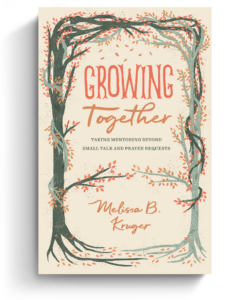If you’ve never read the whole Bible, what are you waiting for? The Bible has been described as God’s love letter to the people he’s created, and each and every part of it contributes to the full revelation of his love.
Many people have managed to read through the whole Bible by setting themselves the target of reading it all in one year. If you think 2023 might be the year for you to give that a shot, I’d advise using a Bible-in-a-year schedule. It acts like a pace-setting runner who helps another runner maintain a steady speed on the way to achieving a targeted time. You’ll be unlikely to get through the whole Bible in a year without the help of a schedule giving you manageable daily portions.
Psalms–Ezekiel Plan
The reading schedule I’ve used for the past few years is the Psalms–Ezekiel Plan. Like several other plans, it has two tracks, which means each day you read two separate portions of Scripture. In this plan, track 1 is the Old Testament minus Psalms and Ezekiel; track 2 is Psalms and Ezekiel plus the New Testament—no prizes for guessing why it’s called the Psalms–Ezekiel Plan.
Track 1 is two chapters a day, all the way from Genesis to Malachi. Track 2 is also two chapters a day for Psalms and Ezekiel, but when you reach the New Testament, it’s just one chapter a day.
Why I Like This Plan
1. No Extras
If you’ve never read the whole Bible, what are you waiting for?
There are many Bible-in-a-year reading schedules, but some of them are more suitable for veterans than first-timers. For example, the much-loved M’Cheyne Bible Reading Plan calls for the New Testament and the Psalms to be read twice, with the rest of the Old Testament read once. It may not be the best pick for a Bible-in-a-year rookie because of the additional quantity of reading required.
Other plans include devotional thoughts, which—however helpful they may be—add to the overall word count. This plan includes only the Old and New Testaments.
2. Variety
As my mother likes to say, “Variety is the spice of life.” This plan, like other two-track schedules, provides two daily portions taken from different parts of the Bible. That has the effect of spicing things up. If one portion is slow going, the other portion will hopefully be more of a page-turner.
3. Simplicity
I first read the whole Bible when a friend recommended a wonderfully simple daily schedule: “Three chapters from the Old Testament, one from the New.” The simplicity of the plan meant I could immediately visualize what the task would involve, which made it seem more doable.
It was also helpful not to have to keep consulting a calendar list of readings—printed lists can get lost, and online lists make it impossible to have a phone-free quiet time. I just had to remember where I’d got to, and then I read the next three chapters from the Old and one from the New. (That particular schedule, however, has the disadvantage of not spreading out the reading over a whole year—it only takes 10 months—so the daily quantity of reading is heavier than it needs to be.)
The Psalms–Ezekiel Plan is similarly simple. You don’t have to consult a calendar list of passages. But if you’re someone who never remembers where you finished on the previous day, you can download the list and keep it handy. As you can see from the list, the New Testament track finishes about a week before the end of the year, which gives you the chance to catch up on anything in the Old Testament you might have missed.
Other Bible-in-a-year plans have their strengths, but this one has a claim to be the easiest to accomplish.
Involved in Women’s Ministry? Add This to Your Discipleship Tool Kit.
 We need one another. Yet we don’t always know how to develop deep relationships to help us grow in the Christian life. Younger believers benefit from the guidance and wisdom of more mature saints as their faith deepens. But too often, potential mentors lack clarity and training on how to engage in discipling those they can influence.
We need one another. Yet we don’t always know how to develop deep relationships to help us grow in the Christian life. Younger believers benefit from the guidance and wisdom of more mature saints as their faith deepens. But too often, potential mentors lack clarity and training on how to engage in discipling those they can influence.
Whether you’re longing to find a spiritual mentor or hoping to serve as a guide for someone else, we have a FREE resource to encourage and equip you. In Growing Together: Taking Mentoring Beyond Small Talk and Prayer Requests, Melissa Kruger, TGC’s vice president of discipleship programming, offers encouraging lessons to guide conversations that promote spiritual growth in both the mentee and mentor.

































